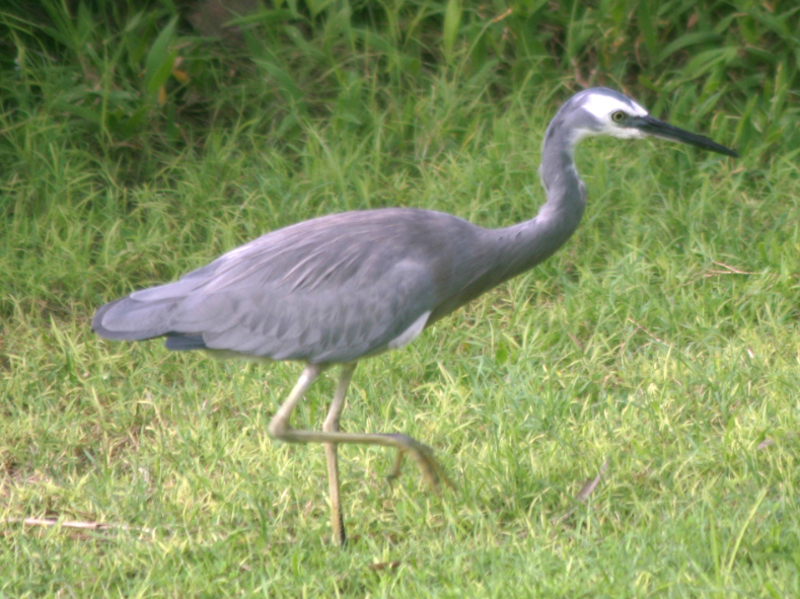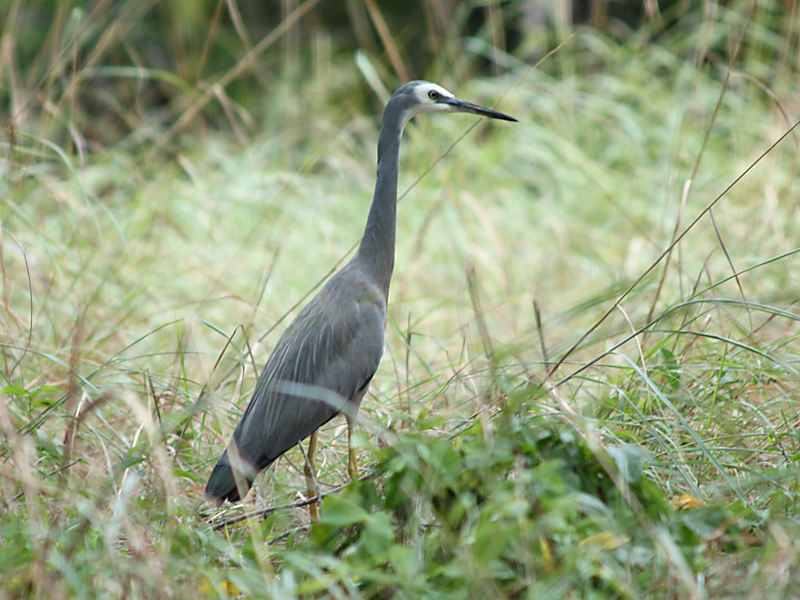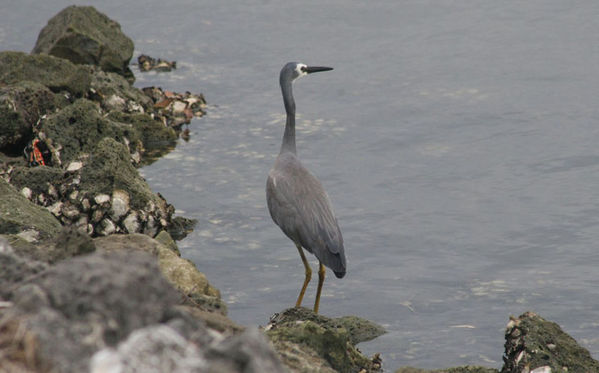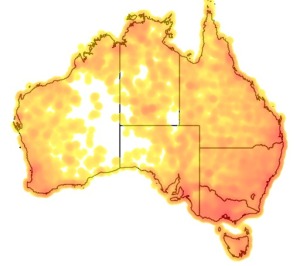Colours
Distinguishing features
A tall, slender, grey heron with a white face, dark bill and yellow legs.
The adult is relatively small, and pale blue to grey. The forehead, crown, chin and upper throat are white. The crown pattern is variable, with the white occasionally spreading down the neck; the variability makes identification of individuals possible. The iris may be grey, green, dull yellow or cinnamon. The regions between the eye and bill on the side of the head (lores) are black. The beak is black and often pale grey at the base.
During the breeding season pinkish-brown or bronze nuptial plumes appear on the foreneck and breast, with blue-grey plumes appearing on the back.
Immature birds are paler grey with only the throat white, and often have a reddish colour on the underparts. Chicks are typically covered with grey down. (Wikipedia)
Size
- From 60 cm to 70 cm (Length of specimen)
Wingspan
- Wingspan data is not yet available.
Synonyms
Similar taxa
-
Animalia:
Eastern Reef Egret (species: Egretta sacra)
The grey morph of the Eastern Reef Egret does not have a white face and is darker grey than the White-faced heron. -
Animalia:
Eastern Reef Egret (species: Egretta sacra)
The grey morph of the Eastern Reef Egret does not have a white face and is darker grey than the White-faced Heron.
Distribution
Distribution and habitat preferences
It is a common bird throughout most of Australasia, including New Guinea, the islands of Torres Strait, Indonesia, New Zealand, the islands of the Subantarctic, and all but the driest areas of Australia.
It is locally nomadic and found in both fresh and salty wetlands, farm dams, pastures, grasslands, crops, shores, saltmarsh, tidal mudflats, boat-harbours, beaches, golf courses, orchards or in garden fish-ponds. (Wikipedia)
Local abundance
- Lizard Island, Queensland, Australia: Occasionally seen at Lizard Island and Eagle Island
Diet
They eat most small aquatic creatures and their varied diet is fish, frogs, small reptiles and insects. It uses a variety of techniques to find food including standing still and waiting for prey movement (often employing a peculiarly rhythmic neck movement whether in water or on land), walking slowly in shallow water, wing flicking, foot raking or even chasing prey with open wings. (Wikipedia)
Web resources
References
- Smith, G.C. (1987). The birds of Eagle Island, a tropical sand cay on the northern Great Barrier Reef, Australia, The Sunbird, 17(1): 1-11. LIRS catalog number 245.







